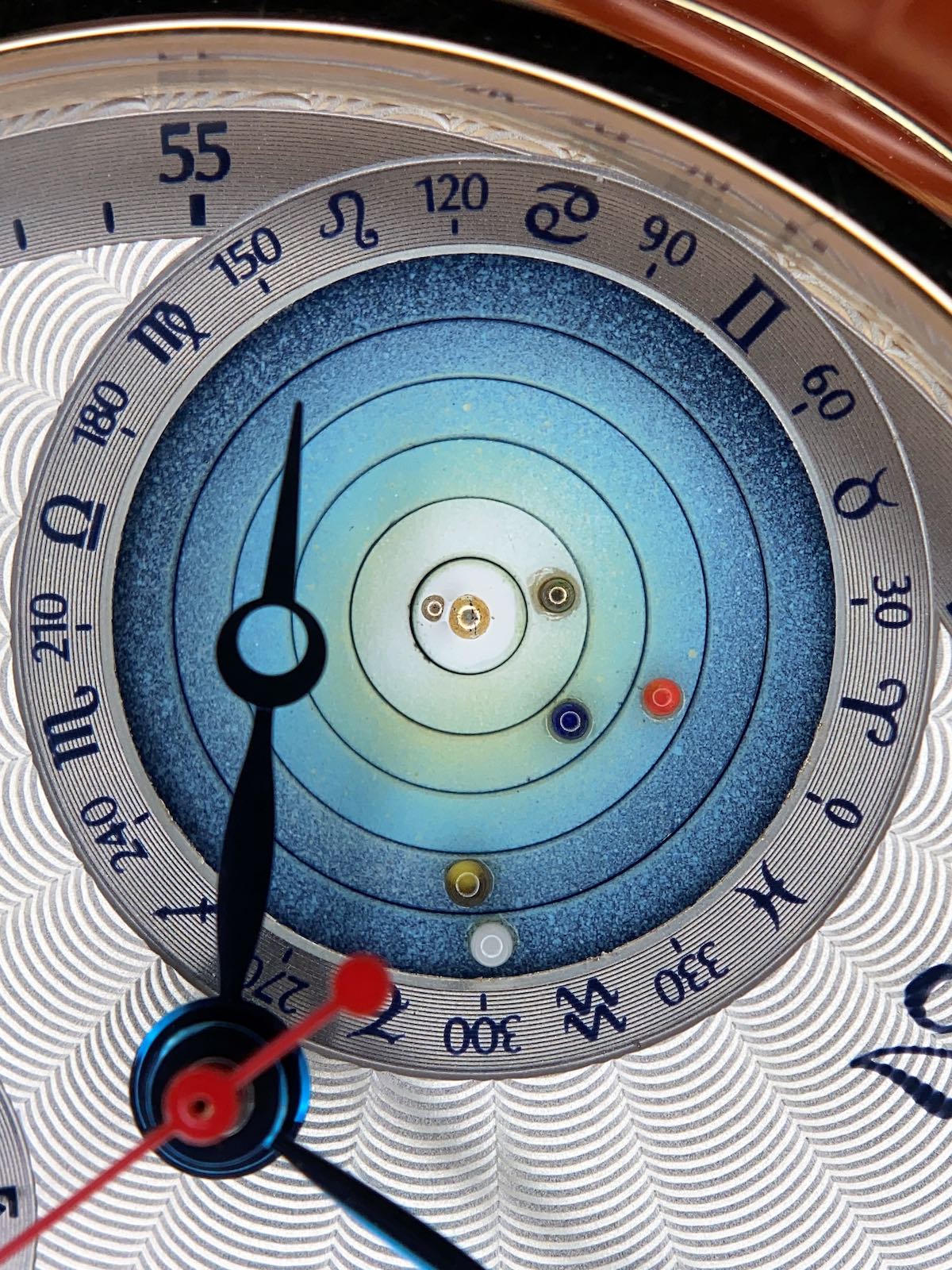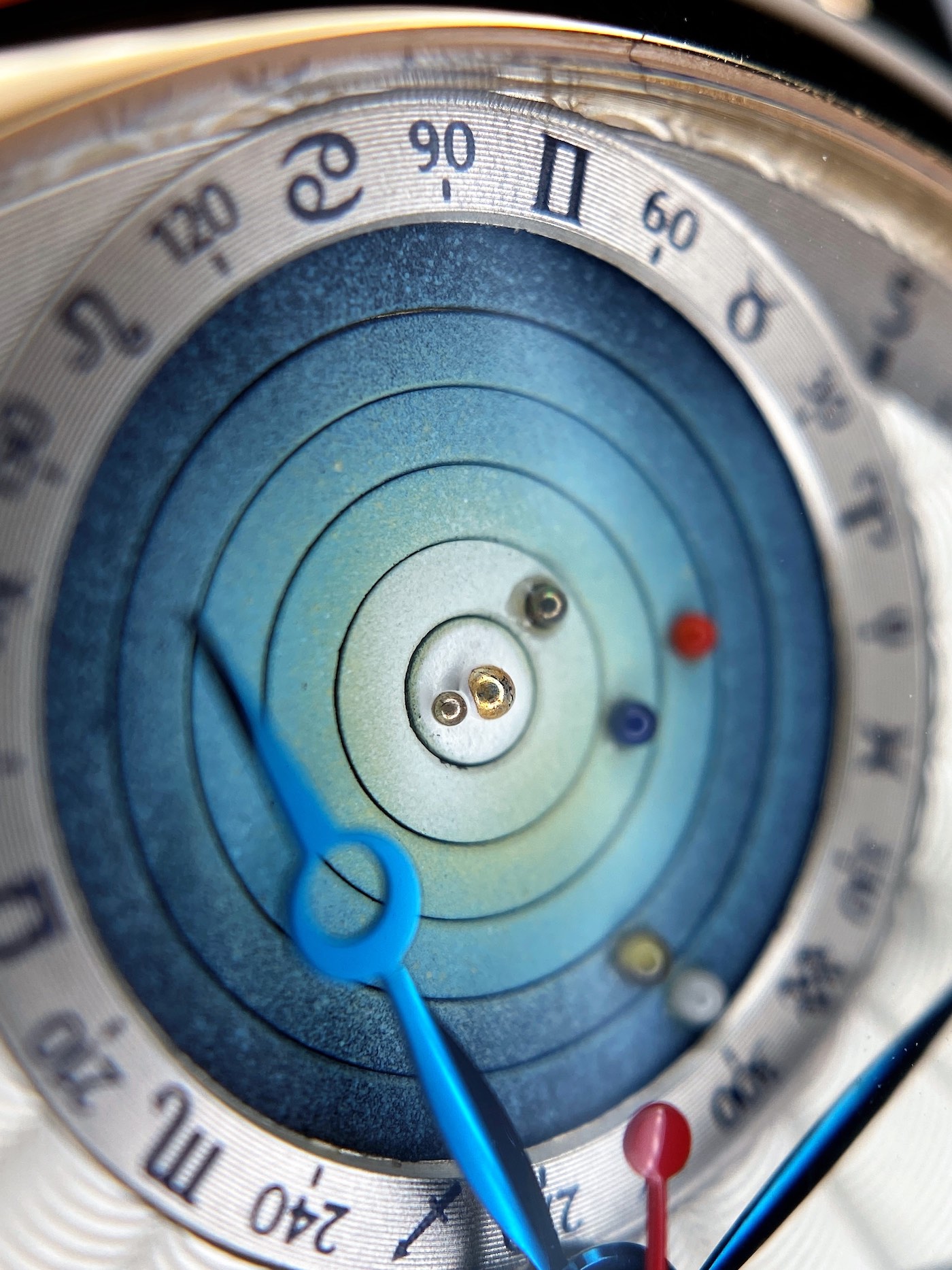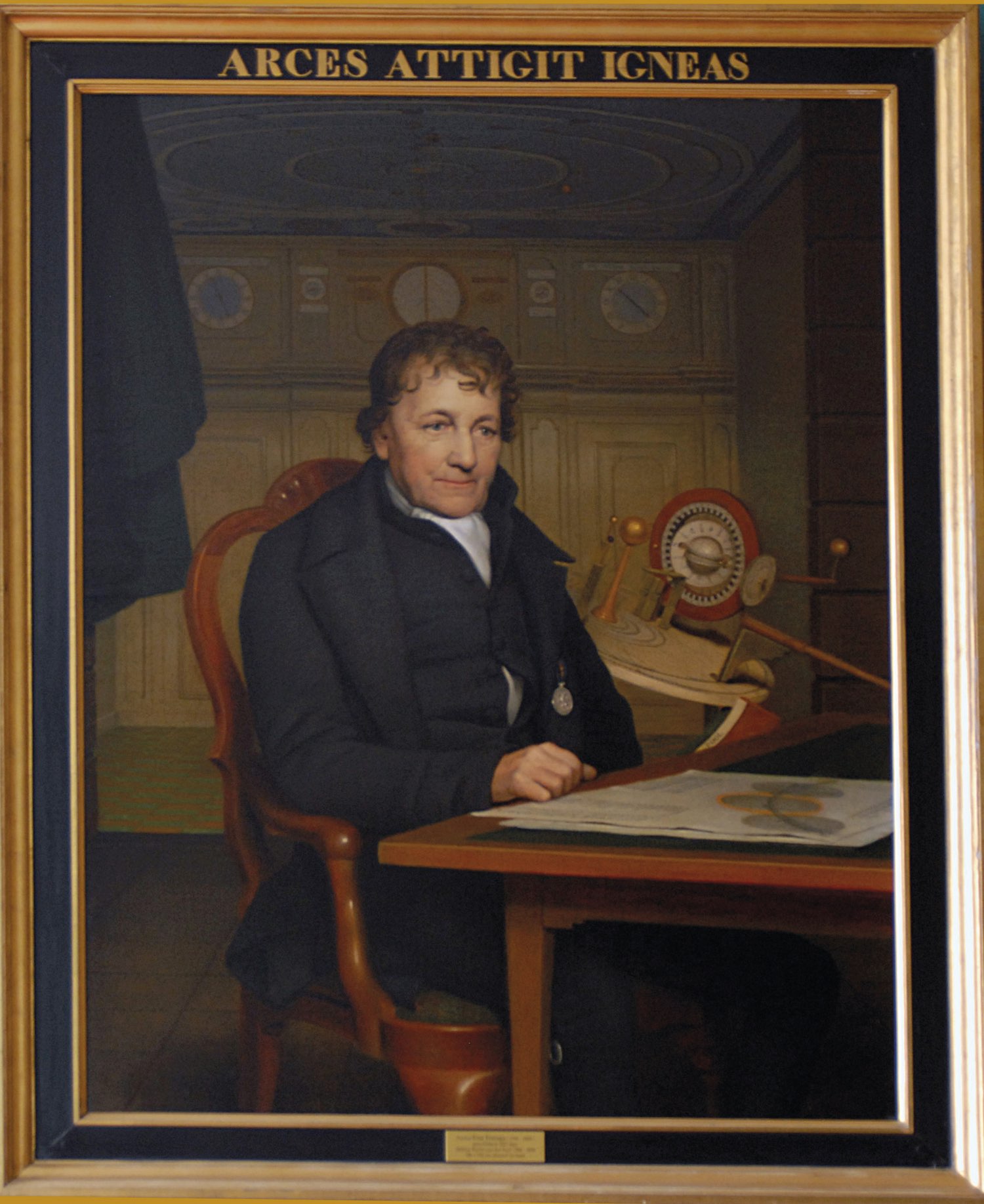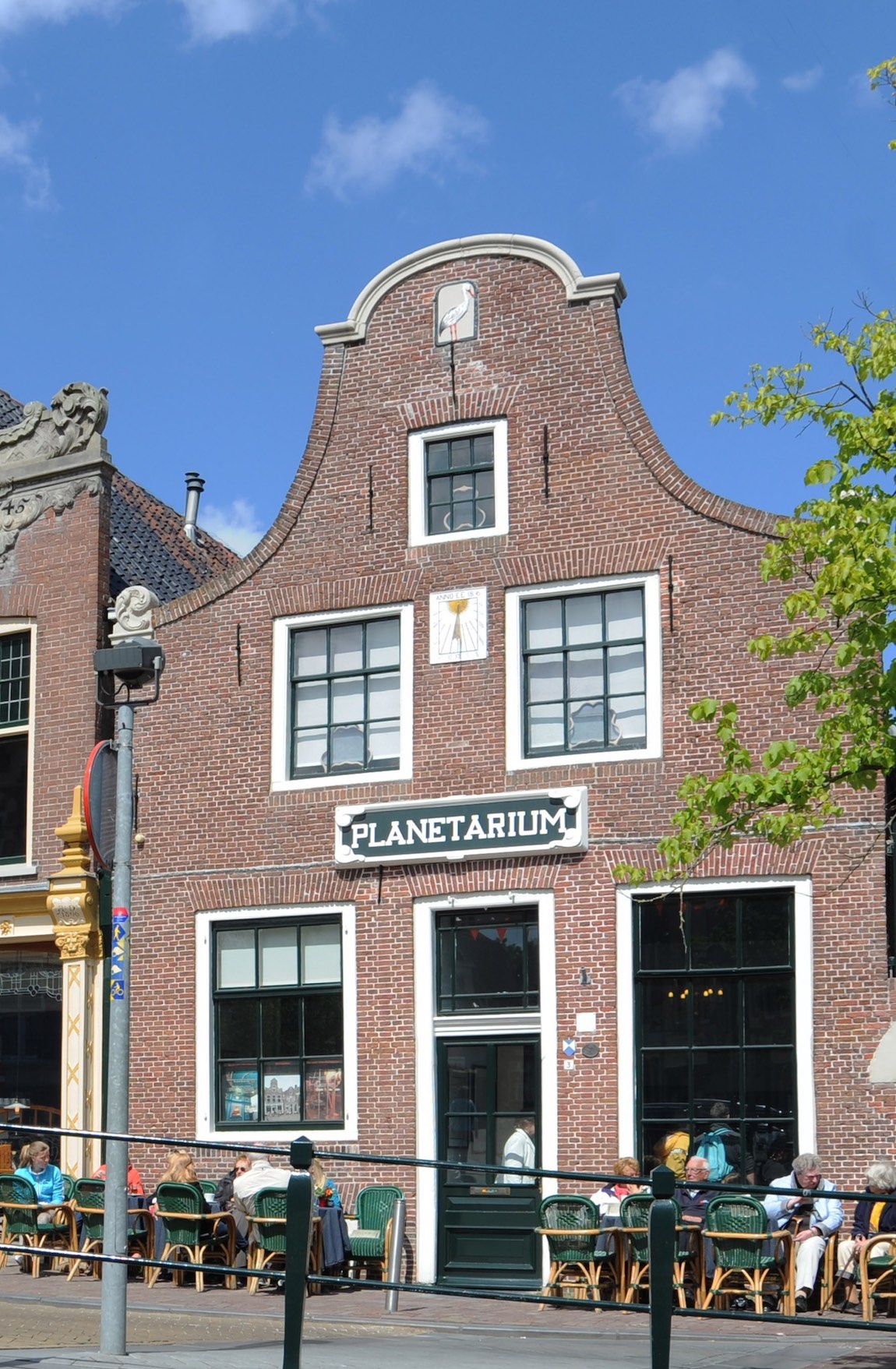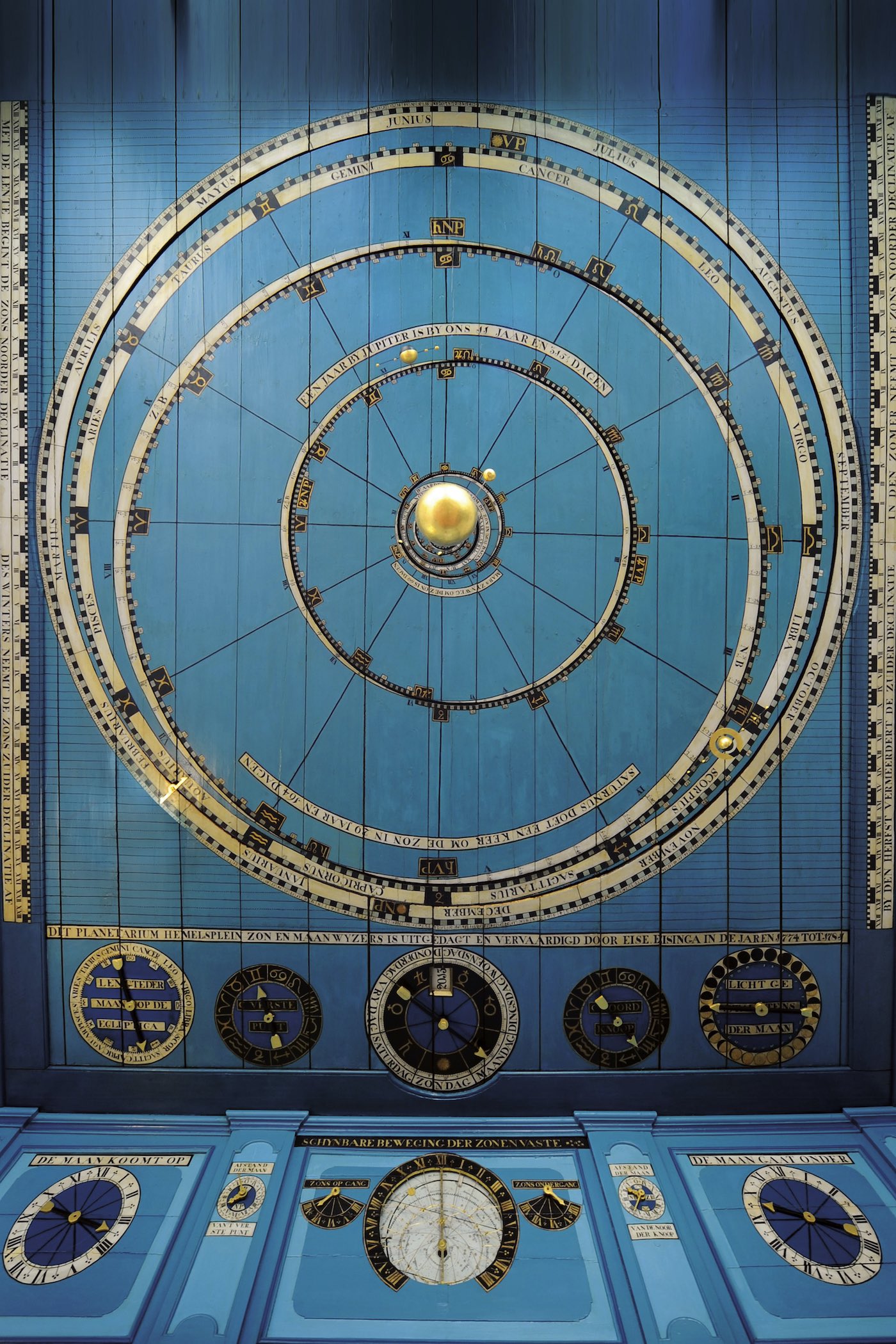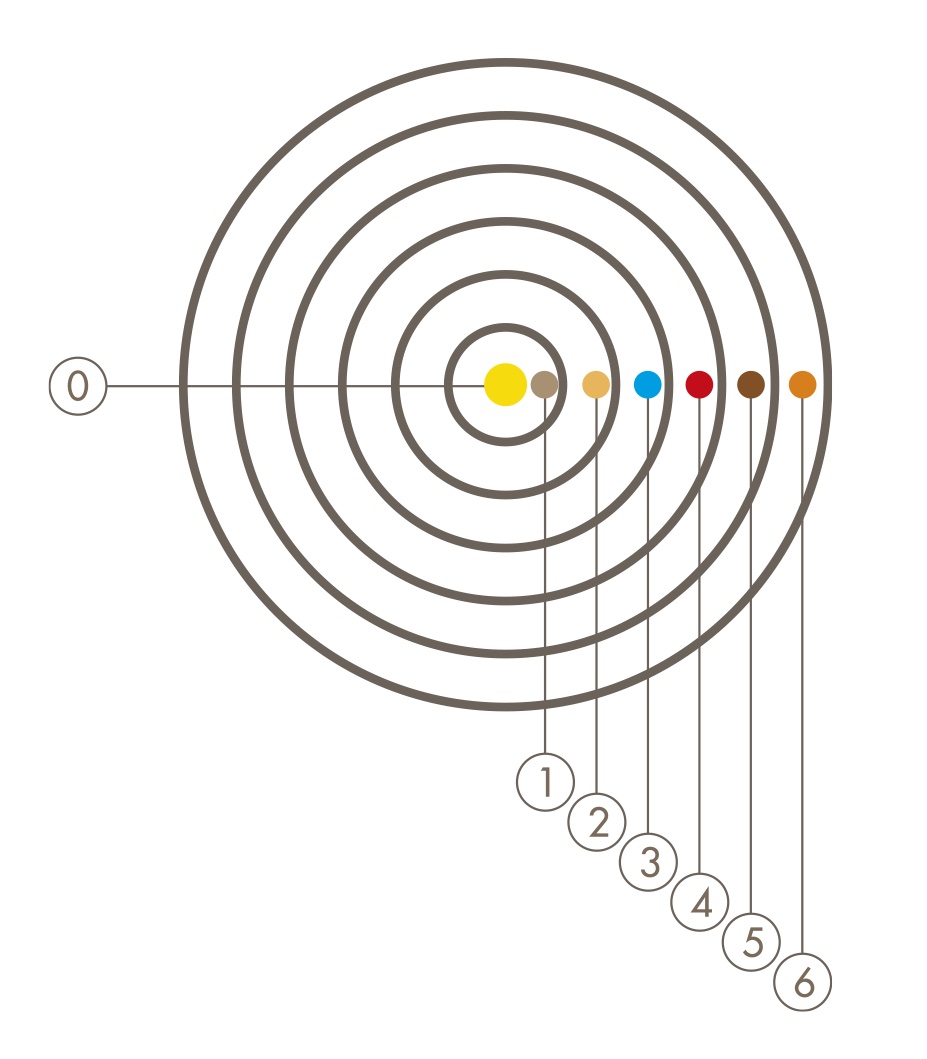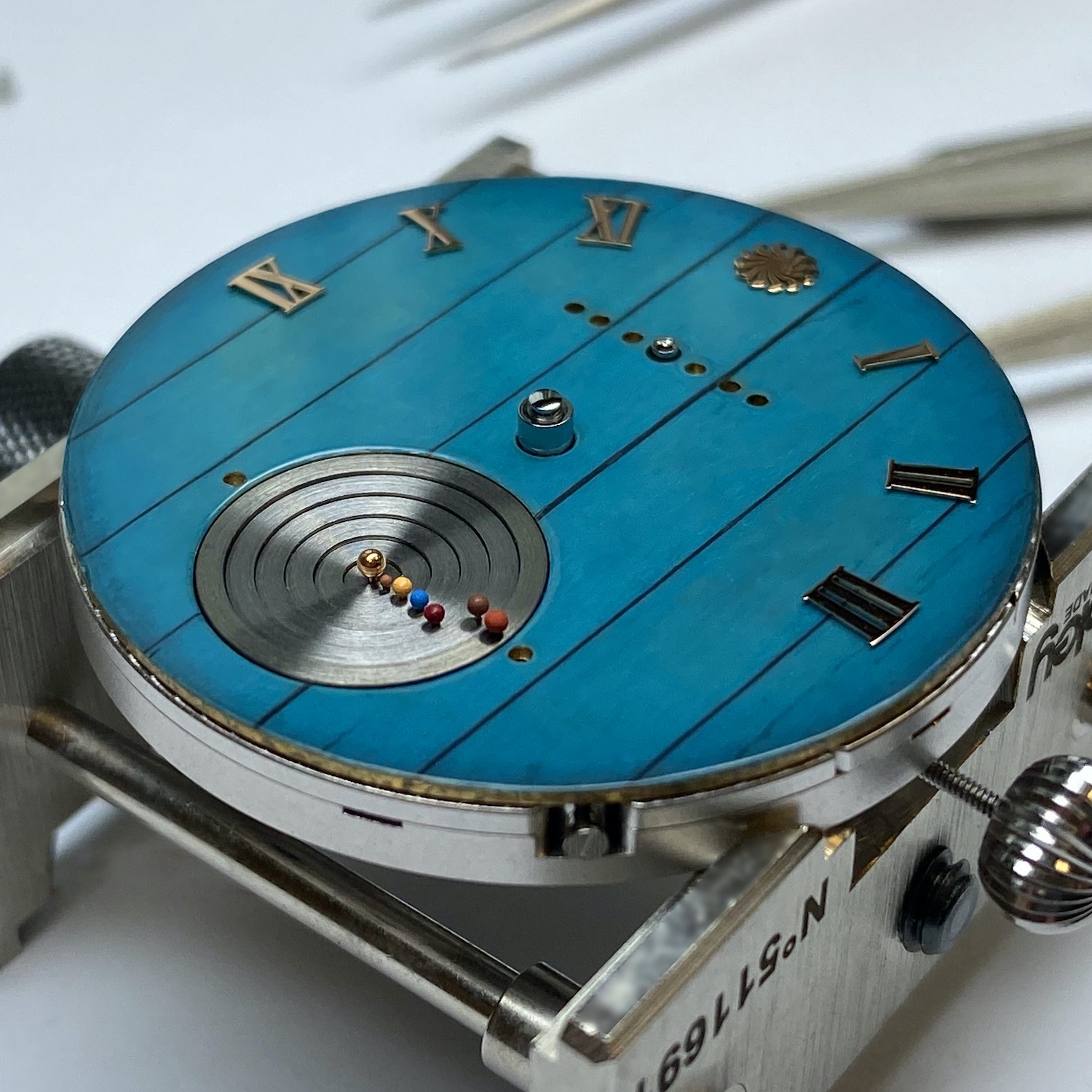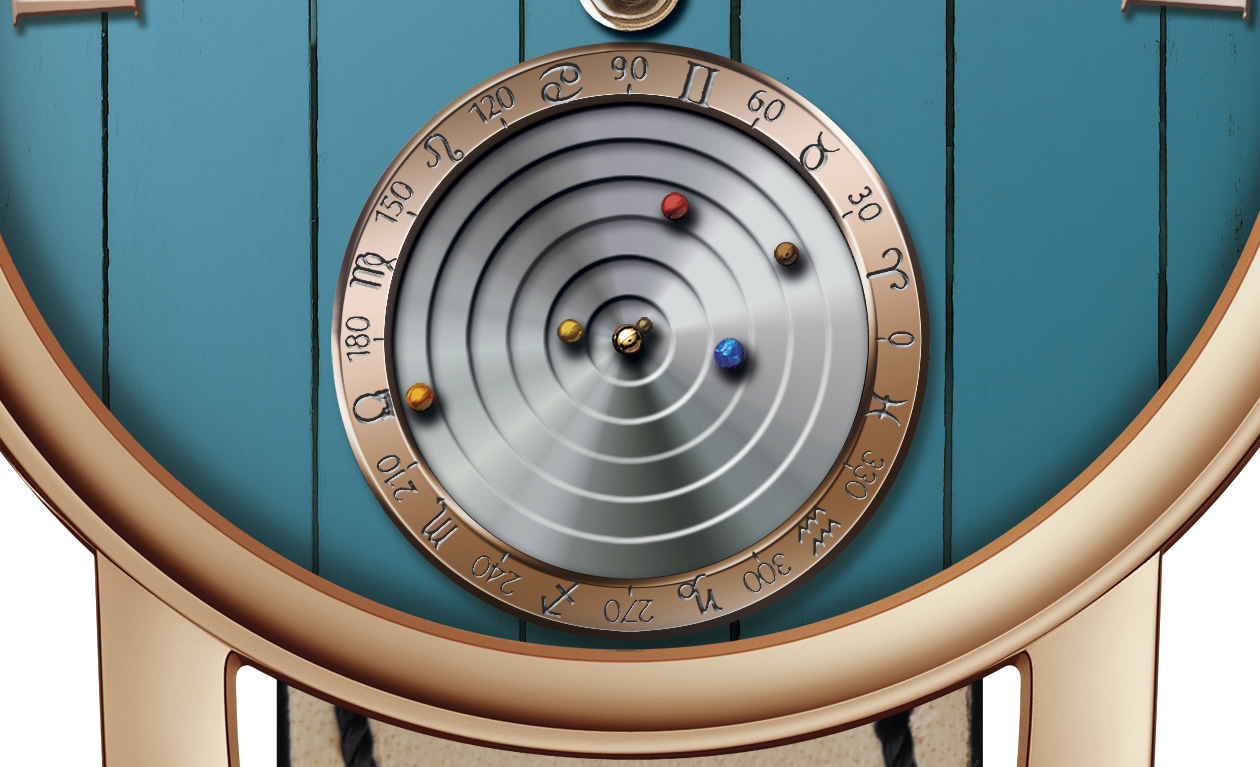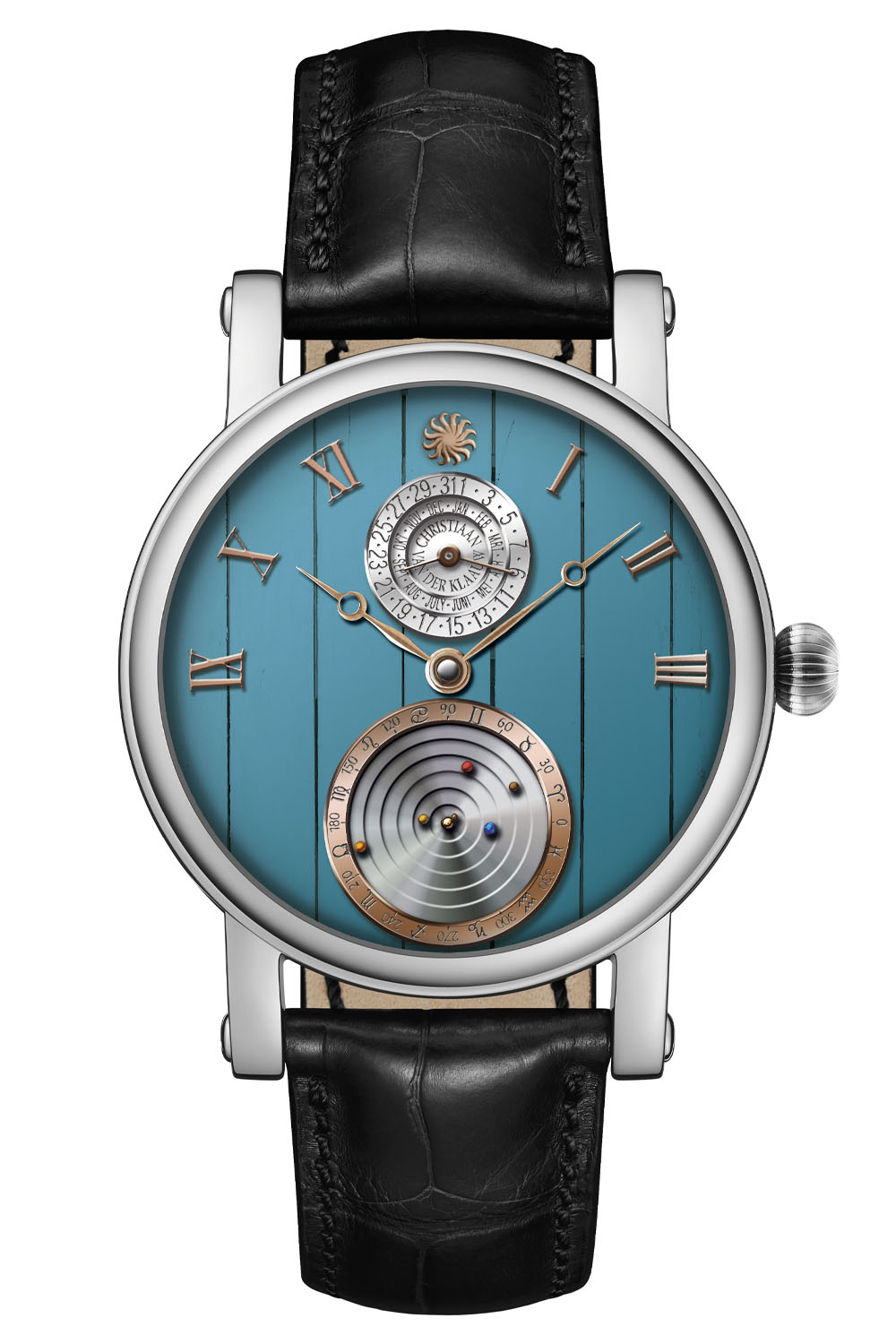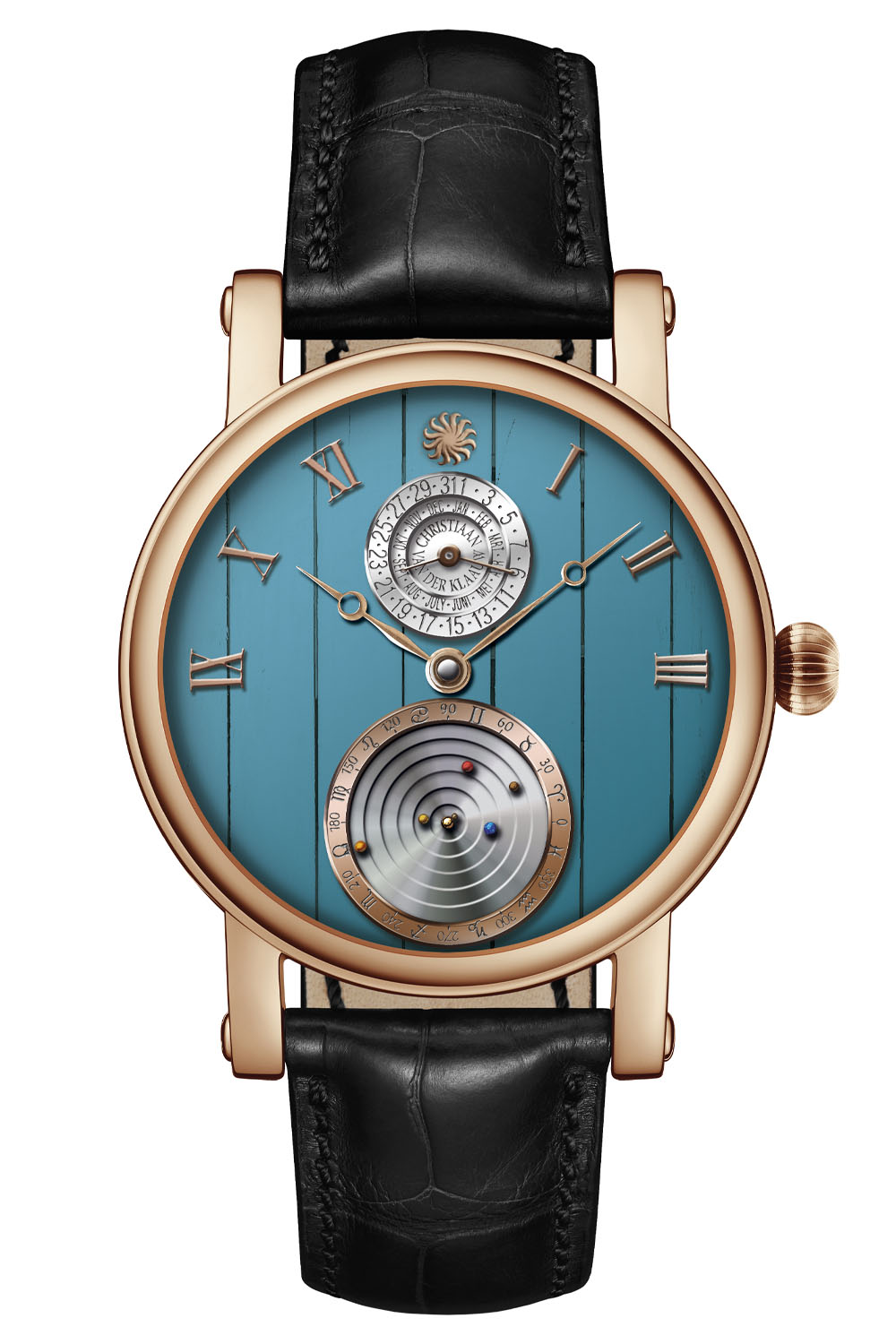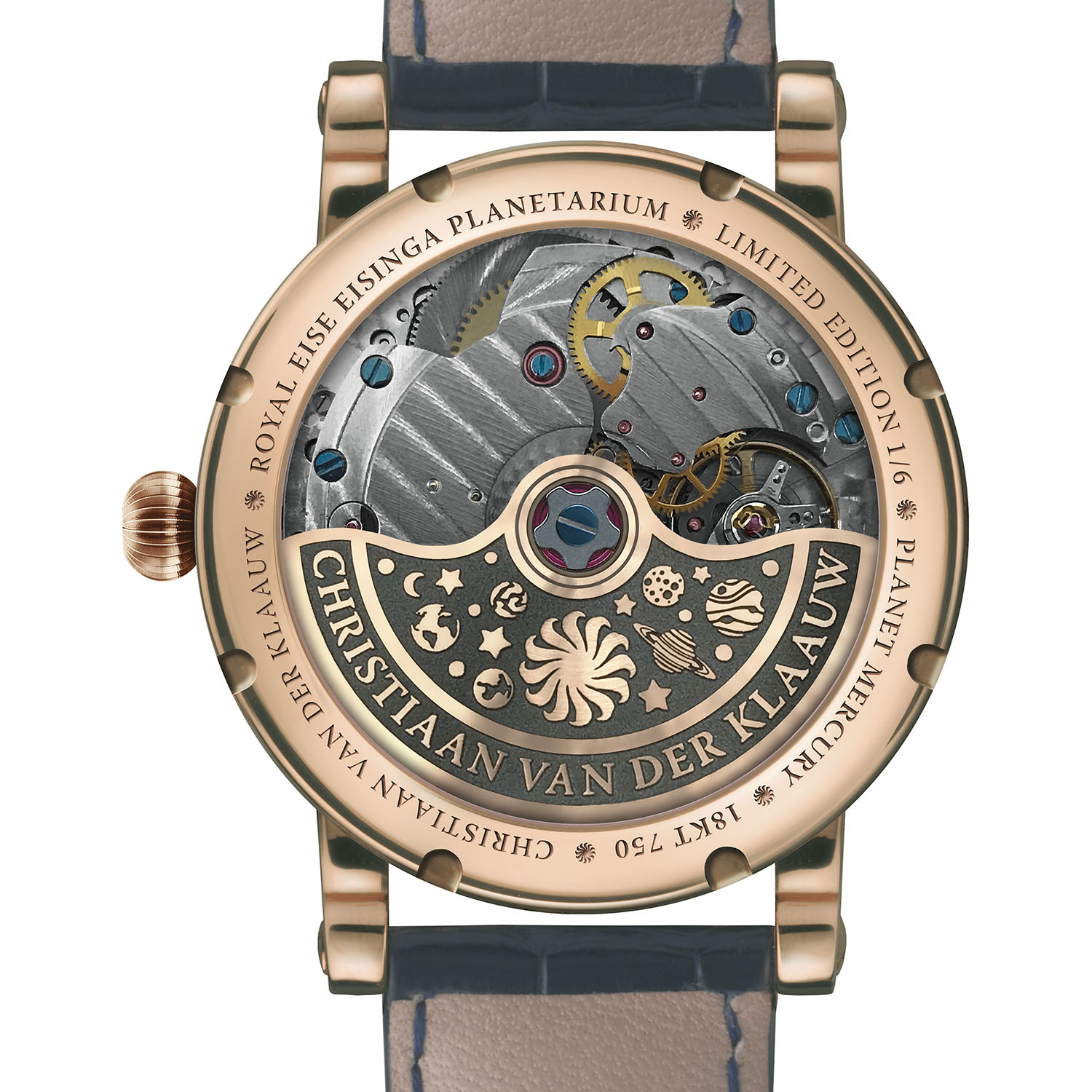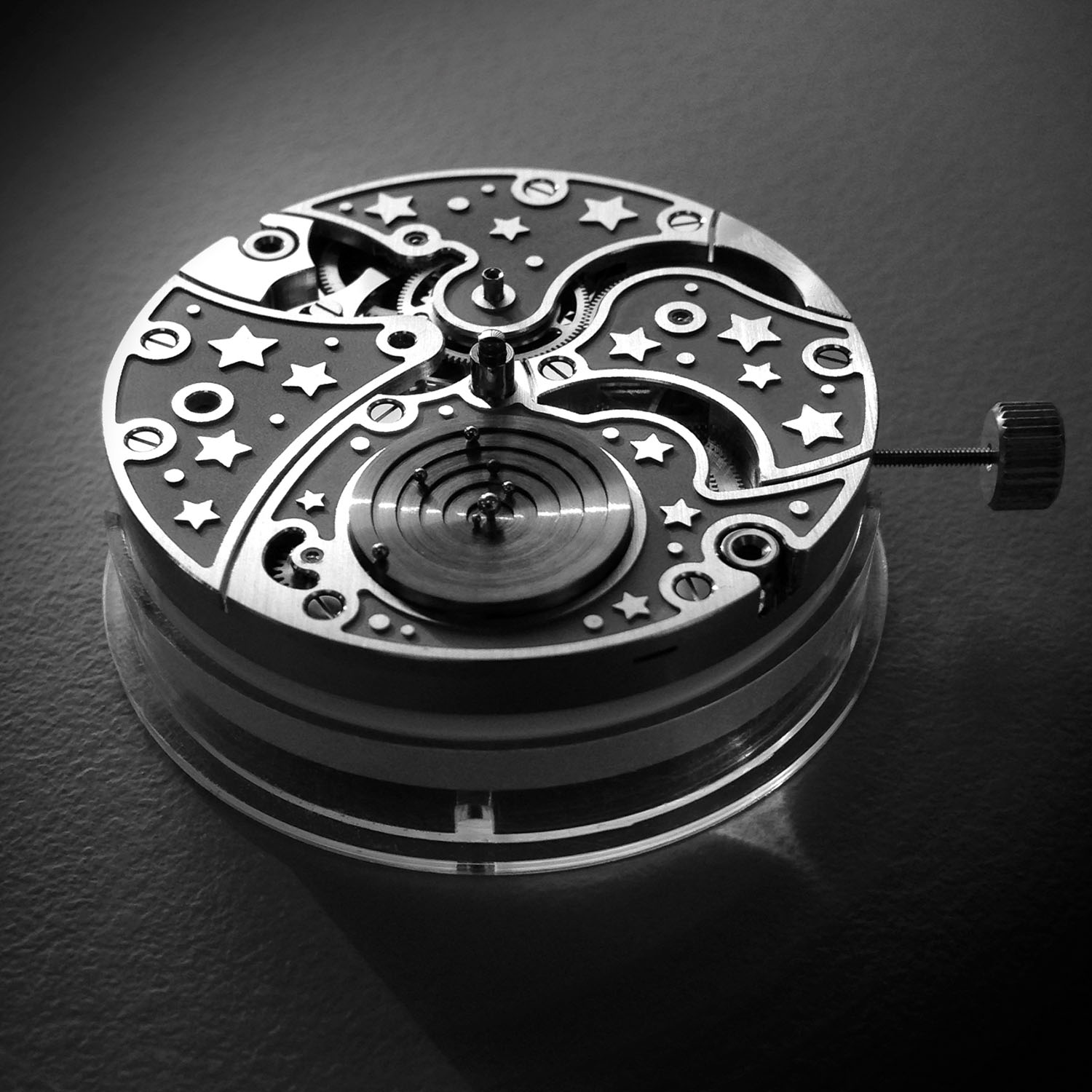Christiaan van der Klaauw Planetarium Eise Eisinga Limited Edition
Or how CVDK incorporated the oldest working planetarium in the world into the smallest mechanical planetarium in the world...
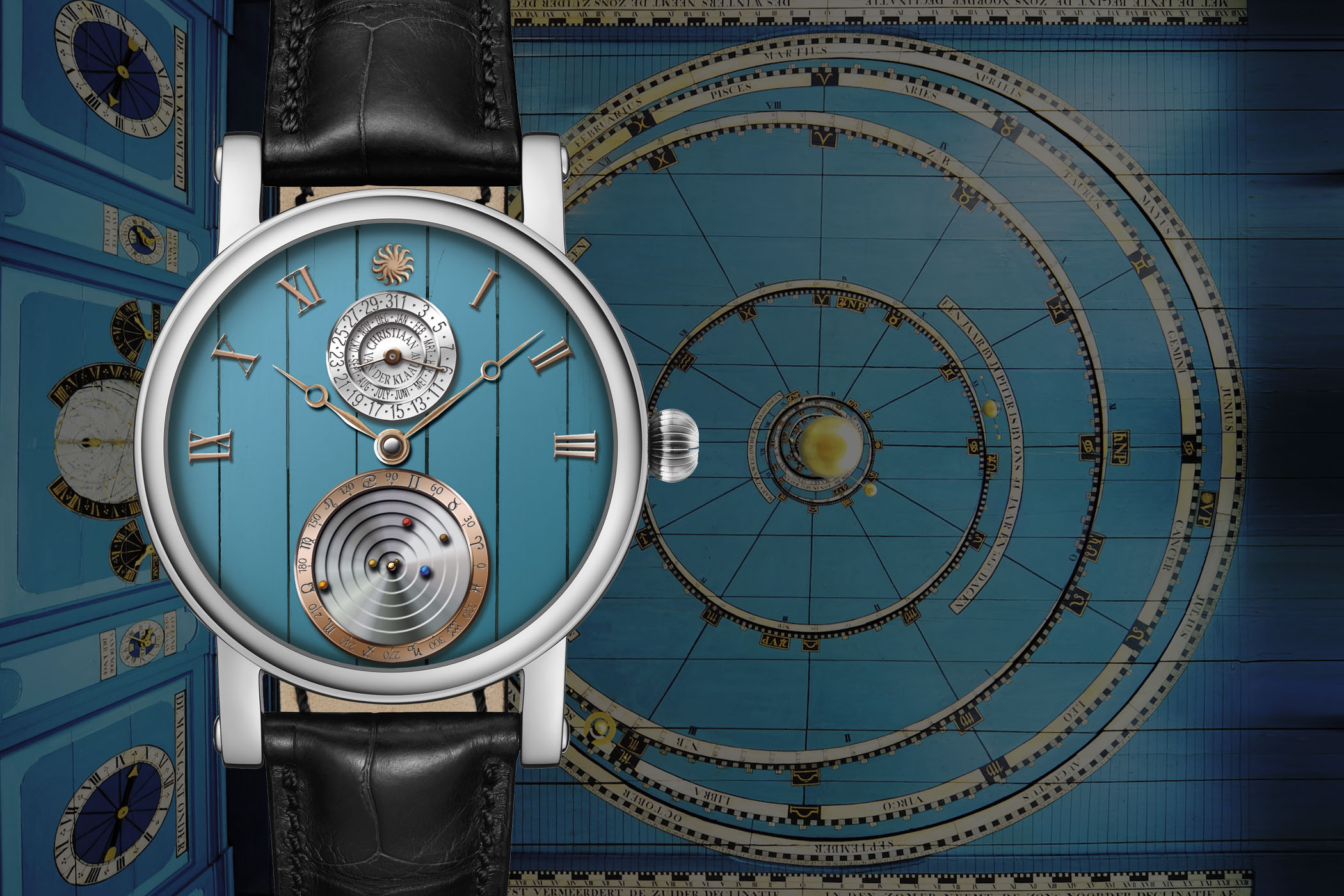
Christiaan van der Klaauw will not only go down in history as the most famous Dutch watchmaker of handmade astronomical complications, but he will also be credited as the creator of the smallest mechanical planetarium in the world, so small that it fits inside a wristwatch. The latest mechanical wonder to emerge from the CVDK workshops is a limited edition of twelve (six in steel, six rose gold) models depicting the Royal Eise Eisinga Planetarium on their dials.
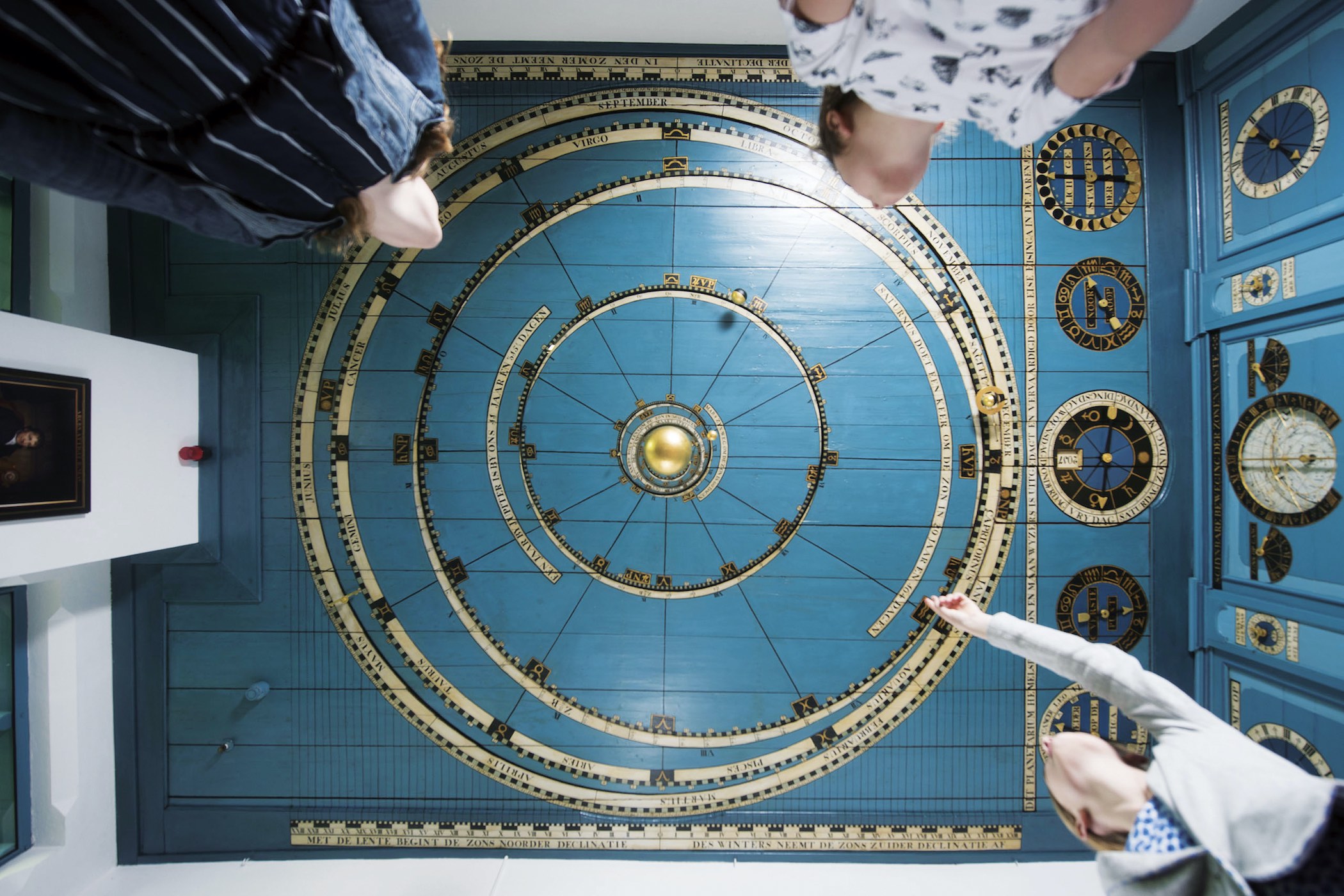
The oldest working planetarium in the world, Eise Eisinga’s beautiful orrery (a mechanical model of the solar system) was finished in 1781 and enacts the motions of the planets with astonishing accuracy thanks to a hidden clockwork mechanism. Unlike other upright orreries of the epoch, Eise Eisinga’s planetarium simulated the workings of the solar system as realistically as possible and was placed on the ceiling of his living room. Painted by hand, the dials of the Christiaan van der Klaauw Planetarium Eise Eisinga recreate the exact colour of the ceiling planetarium and reproduce the real-time orbits of Mercury, Venus, Earth, Mars, Jupiter and Saturn – along with the more mundane functions of hours, minutes, date and month.
Written in the Stars
Van der Klaauw is THE master of planetarium watch… And this new one is a superb tribute to Dutch horology
When Christiaan van der Klaauw founded his astronomical complications atelier in 1974, he was, in essence, perpetuating a longstanding Dutch fascination with astronomy. Born in 1944 in the university town of Leiden, Christiaan van der Klaauw attended the School for Instrument Makers (Lis). As the birthplace of the greatest Dutch scientist of all times, Christiaan Huygens, and the site of the prestigious Leiden University, the first university to boast an astronomical university in 1633, Christiaan van der Klaauw’s love of astronomy was, you could say, written in the stars.

His passion for all things related to the celestial dome initially resulted in ornate, highly sophisticated clocks with animations like moon phases, planetariums and astrolabes before scaling down to wristwatches in 1996 with the Satellite du Monde. His masterpiece, the CVDK Planetarium, was equipped with the smallest mechanical planetarium in the world and made its debut in 1999.
Hypnotised by its mechanical beauty, the CVDK Planetarium strayed from its orbit to appear in two Van Cleef & Arpels models: the Midnight Planetarium and the Lady Arpels Planetarium in 2014 and 2018 respectively. In 2009 Dutch designer Daniël Reintjes took over the business, always under the watchful eye of his master, with an exclusive focus on astronomical watches. Intriguing astronomical complications followed suit, including the most accurate 3D moon phase watch, the Real Moon Joure, with a deviation of just one day every 11,000 years.
Masters of the Universe
From Christiaan Huygens (1629-1695) who discovered Saturn’s first satellite, Titan, and invented the pendulum, to Jan Hendrik Oort (1900-1992) pioneer of radio astronomy who calculated the mass of the Milky Way and proved that it is a fast rotating disc, Holland has produced an exceptional amount of stargazers.
Among the distinguished roster is Eise Eisinga (1744-1828), a wool comber and amateur astronomer who gained international recognition for his scale model of the universe represented in sparkling gold and royal blue on the ceiling of his living room in Franeker, in the province of Friesland.
The oldest working planetarium in the world, Eisinga’s beautiful orrery (a mechanical model of the solar system), was finished in 1781. Constructed to a scale of 1 to 1 trillion (1mm:1million km), the planets still orbit the Sun with astonishing accuracy to this day. Sadly, there was no space left on Eisinga’s ceiling to accommodate the discovery of Uranus in 1781 by William and Caroline Herschel. Neptune and Pluto were also missing because they were discovered in 1846 and 1930 respectively.
Keep Calm and Carry on
Historical accounts claim that Eisinga built the orrery to disprove a doomsday prediction made by Reverend Eelco Alta in 1774 that was causing a great deal of unrest among the population. According to the preacher, a conjunction of the Moon and four planets would push Earth out of its orbit directly into the incinerating flames of the Sun. To provide a correct picture of the solar system and allay unfounded fears of a disastrous planetary conjunction, Eisiga built an orrery in his living room.
Although Eisinga’s orrery was not completed in time (finished in 1781) to disprove the reverend’s prophecy of Armageddon, it attracted the attention of King William I of the Netherlands who bought the mechanical wonder for the Dutch state in 1818.
Conjunction of masterpieces
To re-enact the real-time orbit of the planets, the miniature planetarium on the watch is recreated with a series of concentric, stacked rotating discs and different coloured hand-painted spheres representing the six planets. Starting from the central golden Sun, the planets appear in the following order determined by their orbits and proximity to the Sun: Mercury 87.97 days, Venus 224.70 days, Earth (blue) 365.24 days, Mars (red) 686.98 days, Jupiter 11.86 years and slow-moving Saturn 29.46 years.
Both the rose gold and steel models are housed in the classic, round 40mm cases of the brand with straight lugs and an onion crown. To recreate the exact blue colour of Eisinga’s ceiling and the texture of the timber planks, the dial has been painted by hand with oil paints by artist Gaël Colon.
The brand’s signature golden Sun with 12 claws (Klaauw means claw in Dutch) is applied at 12 o’clock. Below the Sun is the annual calendar complication with the days and months displayed in concentric silver discs and the founder’s name in the centre. Six rose gold-plated Roman numerals are applied just above an imaginary horizon to avoid spoiling the spectacle of the planetarium. Other hallmark CVDK touches are the Breguet-style hands for the hours and minutes.
CVDK7386
The view from the reverse is no less captivating. The rotor is hand-engraved with the six planets represented on the dial and the 12-clawed Sun in the centre. The automatic movement is surmounted by the CVDK Planetarium module and equipped with twin barrels to provide a 96-hour power reserve. The finishings are in keeping with the Haute Horlogerie pedigree of the brand with Geneva stripes on the bridges, blued screws and perlage.
thoughts
Expressions like ‘reach for the stars’ and ‘ask for the Moon’ pale when presented with this magnificent representation of our solar system. A miniature portable orrery, CVDK’s Planetarium still manages to inspire genuine wonder and awe in the 21st-century, just like Eisinga’s beautiful celestial representation must have done when incredulous visitors craned their necks and looked up to admire his ceiling in motion.
Availability and price
The CVDK Planetarium Eise Eisinga Limited Edition will be available in stainless steel (6 pieces) and rose gold (6 pieces), both presented on black leather strap with a folding clasp to match the metal of the case. Each watch is engraved with the name of one of the six planets featured on the dial. The steel model retails for EUR 43,950, the rose gold for EUR 58,450.
More information at Klaauw.com.

